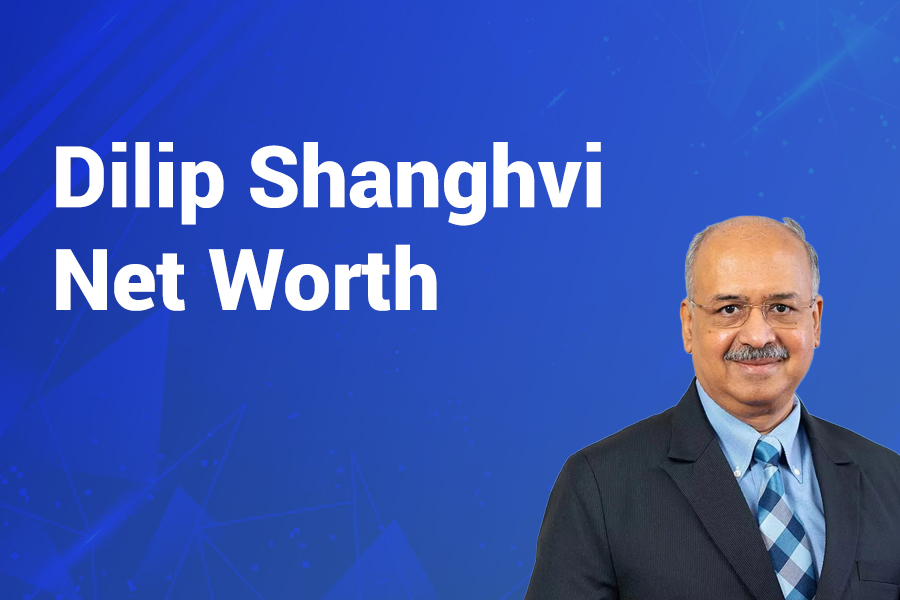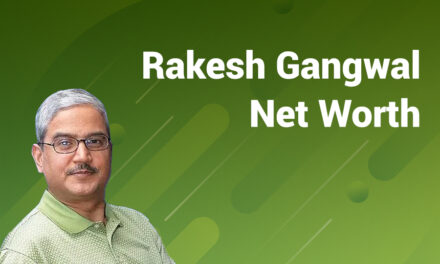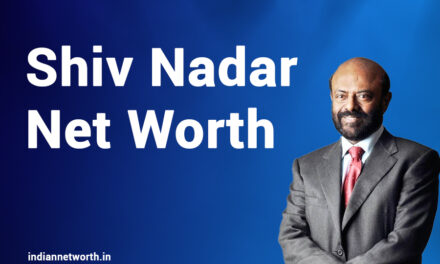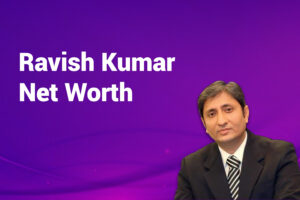Dilip Shanghvi is one of India’s most remarkable self-made billionaires. Known as the founder of Sun Pharmaceutical Industries, he transformed a modest loan and a two-employee startup into a global pharmaceutical giant.
His story is not just about wealth but about vision, persistence, and strategic brilliance. As of 2025, his net worth stands at $25.8 billion, making him one of the richest men in India and a key player in the international healthcare sector.
This article explores his net worth in detail, how he built his empire, and the factors that continue to drive his fortune. It also examines his early life, major business moves, investment strategies, and future prospects.
Early Life and Education
Dilip Shanghvi was born on October 1, 1955, in Amreli, Gujarat, India. Raised in a Gujarati family, he grew up in Kolkata, where his father ran a small wholesale pharmaceutical business. Shanghvi studied commerce at the University of Calcutta, completing his Bachelor of Commerce (B.Com) degree. His early exposure to his father’s drug distribution trade sparked an interest in the pharmaceutical industry.
Unlike many other Indian billionaires, Shanghvi did not inherit a large conglomerate. His wealth stems from his entrepreneurial spirit and keen eye for opportunities.
Founding of Sun Pharma
In 1983, at the age of 27, Dilip Shanghvi founded Sun Pharmaceutical Industries in Vapi, Gujarat. He started with just ₹10,000 and two employees, focusing on producing psychiatric drugs, a niche market at the time. His strategy was to enter specialized segments overlooked by larger pharmaceutical firms.
From day one, Shanghvi adopted a long-term growth mindset. Instead of diversifying into unrelated businesses, he kept his focus entirely on pharmaceuticals. This clear direction became the cornerstone of Sun Pharma’s success.
Growth and Expansion
Sun Pharma expanded steadily by targeting chronic therapy areas like psychiatry, cardiology, neurology, gastroenterology, and oncology. The company focused on affordable yet high-quality medicines, which quickly won trust in the domestic market.
In the 1990s, Sun Pharma began its international expansion. By acquiring small U.S. and European firms, it gained a foothold in regulated markets. The company invested in research and development to compete globally, paving the way for future acquisitions.
The Ranbaxy Acquisition: A Turning Point
The defining moment in Dilip Shanghvi’s career came in 2014, when Sun Pharma acquired Ranbaxy Laboratories in a $4 billion deal. This was the largest acquisition in the Indian pharmaceutical sector at the time.
The deal transformed Sun Pharma into India’s largest drugmaker and the world’s fifth-largest specialty generics company. It significantly boosted Shanghvi’s personal net worth and positioned him as a global business leader.
Dilip Shanghvi’s Net Worth in 2025
As of 2025, Dilip Shanghvi’s net worth is estimated at $25.8 billion. This figure makes him the seventh richest person in India and places him among the world’s top billionaires.
Net Worth Breakdown:
- Sun Pharma Holdings: The majority of his wealth comes from his stake in Sun Pharmaceutical Industries, valued at billions of dollars.
- Sun Pharma Advanced Research Company (SPARC): A spin-off focusing on drug innovation, adding significant value.
- Other Investments: Shanghvi has made selective investments in renewable energy and financial services, though pharmaceuticals remain his core wealth driver.
Comparison with Other Billionaires
Dilip Shanghvi’s wealth trajectory is notable when compared with other Indian billionaires. His net worth surpasses that of vaccine tycoon Cyrus Poonawalla, highlighting the dominance of Sun Pharma in healthcare. While Mukesh Ambani and Gautam Adani continue to lead India’s billionaire rankings, Shanghvi’s consistent focus on pharma sets him apart.
Unlike Ambani and Adani, who have diversified into multiple industries, Shanghvi’s concentrated bet on healthcare has yielded steady returns.
Business Strategy
Shanghvi’s business philosophy revolves around three key principles:
- Focus on Niche Segments – Instead of competing directly with big players in mass-market drugs, he targeted specialized areas with higher growth potential.
- Strategic Acquisitions – Sun Pharma acquired companies that complemented its portfolio, such as Taro Pharmaceutical in Israel and Ranbaxy in India.
- Research and Innovation – Heavy investment in R&D gave Sun Pharma an edge in complex generics and specialty drugs.
Global Presence
Today, Sun Pharma operates in over 100 countries with more than 40 manufacturing facilities worldwide. Its products cater to chronic therapies like cardiology, neurology, gastroenterology, dermatology, and oncology.
The U.S. remains its largest market, contributing nearly half of its revenues. This global footprint ensures continued growth and revenue stability.
Revenue and Financial Performance
Sun Pharma has consistently reported strong revenue growth. In fiscal year 2024, the company crossed $6 billion in annual revenues, driven largely by its U.S. operations and specialty drug portfolio. The oncology and dermatology divisions reported double-digit growth, boosting margins and profitability.
The company’s operating model emphasizes cost efficiency, global supply chains, and high-volume production, making it competitive in both emerging and developed markets.
Role of Research and Development
Research and development remains central to Sun Pharma’s success. The company invests heavily in R&D, spending more than 7% of annual revenues on innovation. Its pipeline includes complex generics, biosimilars, and specialty drugs targeting unmet medical needs.
The focus on innovation strengthens Sun Pharma’s competitive edge and ensures that it remains relevant in a rapidly evolving pharmaceutical landscape.
Leadership and Management Style
Dilip Shanghvi is known for his participative leadership style. He values teamwork and encourages long-term thinking across his organization. Employees often describe him as approachable and deeply involved in strategic decisions while delegating operational execution.
His low-key persona contrasts with his massive influence in the business world. He avoids unnecessary publicity, believing results speak louder than media attention.
Personal Life
Despite his immense wealth, Dilip Shanghvi is known for his low-profile lifestyle. He avoids media attention and rarely appears in public. He lives in Mumbai with his family and maintains a reputation for humility and discretion.
He has two children – Aalok and Vidhi – who are gradually taking on roles in Sun Pharma. Shanghvi is also a philanthropist, contributing to healthcare, education, and community welfare projects.
Awards and Recognition
Dilip Shanghvi’s contributions have been widely recognized:
- Awarded the Padma Shri in 2016, one of India’s highest civilian honors.
- Featured multiple times on Forbes’ list of world billionaires.
- Ranked among India’s most influential business leaders by Economic Times and Business Today.
Challenges Faced
Like all entrepreneurs, Shanghvi has faced challenges:
- Regulatory Hurdles: U.S. FDA inspections and compliance issues have occasionally slowed Sun Pharma’s operations.
- Market Competition: Intense competition in generics requires constant innovation and efficiency.
- Currency Fluctuations: As a global player, Sun Pharma is sensitive to currency exchange movements.
Despite these obstacles, Shanghvi’s disciplined leadership has helped the company navigate turbulence.
Philanthropy and Social Impact
Beyond business, Shanghvi has contributed to multiple causes. His philanthropic initiatives focus on healthcare infrastructure, education, and rural development. He has supported hospitals, medical research projects, and scholarships for underprivileged students.
His low-key approach extends to philanthropy, where he prefers impact-driven work without publicity. This aligns with his philosophy of letting actions speak for themselves.
Future Outlook
The future looks promising for Dilip Shanghvi and Sun Pharma. Key growth drivers include:
- Expansion into complex generics and biosimilars.
- Growth in oncology and dermatology segments.
- Increasing presence in emerging markets beyond the U.S. and Europe.
- Strong R&D pipeline focusing on specialty therapies.
Given global healthcare demand and aging populations, Sun Pharma’s business model remains highly relevant.
Conclusion
Dilip Shanghvi’s journey from a small-town businessman to a billionaire pharma tycoon is nothing short of extraordinary. Starting with ₹10,000 and two employees, he built Sun Pharma into a $30 billion global giant. His net worth of $25.8 billion in 2025 reflects not just financial success but also decades of strategic thinking and perseverance.
Shanghvi’s story is a testament to focus, patience, and the power of staying true to one’s vision. Unlike many billionaires who expand into multiple industries, he chose to concentrate on pharmaceuticals and emerged as one of India’s most successful entrepreneurs.










